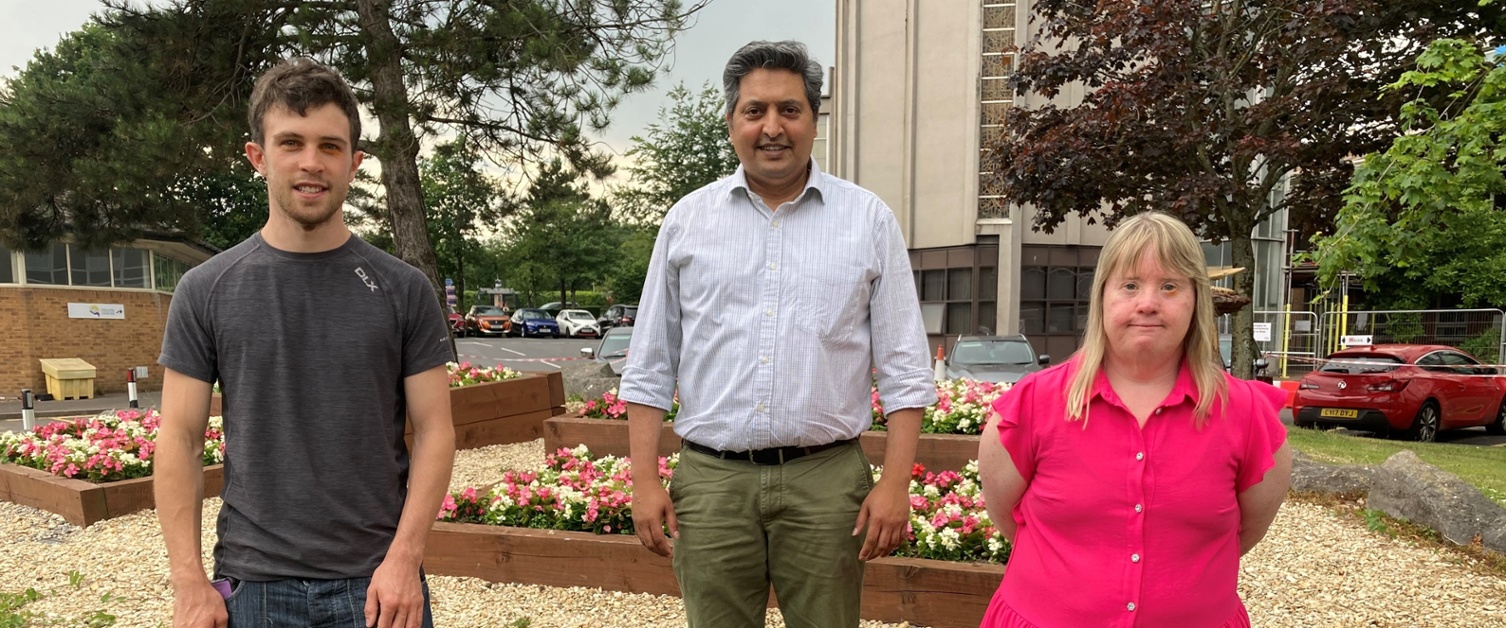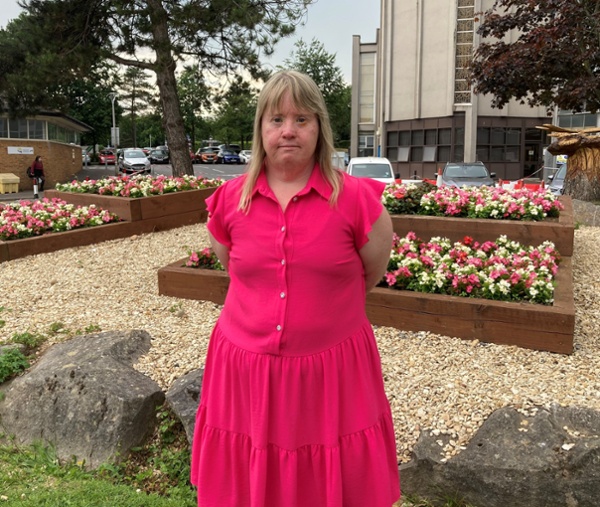Sight-saving service in Swansea available to more patients than ever

Sight-saving surgery is now being offered for the first time in Wales to people with health conditions, disabilities and learning disabilities.
Corneal cross-linking is the only treatment for keratoconus, where the cornea bulges into a cone shape and makes it difficult to see.
The single-visit procedure involves using a machine that focuses UV rays onto the cornea, along with eye drop medication.
These combine to make chemical bonds on the cornea to strengthen it and prevent any further misshaping.
Pictured above: Mr Mario Saldanha with Morgan Bugler and Zoe Wise.
Until five years ago, patients with the condition had to travel to England for the procedure, or pay to have it done privately.
Then, in 2017, a service for adults became available at a hub in Swansea’s Singleton Hospital, the first of its kind in Wales.
Last year it was extended to children as young as 11, following Health Technology Wales approval.
Now, it is being offered to adults and children with disabilities, learning difficulties and conditions such as Down’s syndrome.

Ophthalmology consultant Mario Saldanha, said: “Some of these patients perhaps can’t always vocalise when there is a drop in their vision.
“Normally we do the procedure under local anaesthetic. However, with these patients we do it under general anaesthetic because they may struggle to keep still.”
With keratoconus, the cornea thins out and weakens over time, causing it to bulge into a cone shape which can distort your vision.
The corneal cross-linking procedure, which is entirely nurse-led, helps to stabilise the eye and may help to avoid a corneal transplant in the future.
Zoe Wise, from Risca, had the procedure done in both of her eyes after she began to struggle to see things in the distance while out and about.
The 47-year-old, pictured, said: “I was fine with close-up work but I struggled with seeing things in the distance.
“I couldn’t see signs or traffic. I catch buses and I couldn’t see what was coming towards me.
“I went for a normal eye test and that’s when I realised I could hardly see anything.”
After being referred to her local hospital, Zoe, who has Down’s syndrome, spoke to someone who was aware of the corneal cross-linking procedure in Swansea Bay and she was put forward for it.
“I was a bit apprehensive to have the procedure but I talked about it with my family and decided to have it done. I didn’t want my eyesight to get any worse,” Zoe added.
“Mr Saldanha explained everything to me. He was very good.
“I was a little bit nervous on the day and when I was going down to have it done but I knew I had to do it because I didn’t want to lose my independence or confidence.
“Now I can see better when I’m watching TV and I can read more lines on the wall chart.
“I’m very happy with it and would give it a 10 out of 10."
Morgan Bugler (pictured), has cerebral palsy which causes him to shake and experience tremors. He has also benefited from undergoing the procedure after previously suffering with blurred vision.

“When I would cover my left eye my vision was quite blurred,” the 23-year-old from Haverfordwest, said.
“I found out it was keratoconus and when I had an eye test, they noticed it was in my left eye too.
“I was referred to Withybush Hospital and they recommended I see Mr Saldanha who could do the procedure to stabilise my eyes.
“I was nervous to have the procedure done as I was under general anaesthetic. I woke up and my eyes were stinging but I didn’t have much pain.
“I’ve had a check-up and I’m now able to read an extra line on the eye chart.”
Mr Saldanha added: “I am very pleased with the results of both patients’ and I am very happy we can offer this to our patients in Wales.
“Previously they would have had to travel to Bristol or fund it privately which would have been at a great cost.
“We are so happy to be able to treat them now in Swansea Bay as we are the first hub in Wales for this procedure.”
Rydym yn croesawu gohebiaeth a galwadau ffôn yn y Gymraeg neu'r Saesneg. Atebir gohebiaeth Gymraeg yn y Gymraeg, ac ni fydd hyn yn arwain at oedi. Mae’r dudalen hon ar gael yn Gymraeg drwy bwyso’r botwm ar y dde ar frig y dudalen.
We welcome correspondence and telephone calls in Welsh or English. Welsh language correspondence will be replied to in Welsh, and this will not lead to a delay. This page is available in Welsh by clicking ‘Cymraeg’ at the top right of this page.